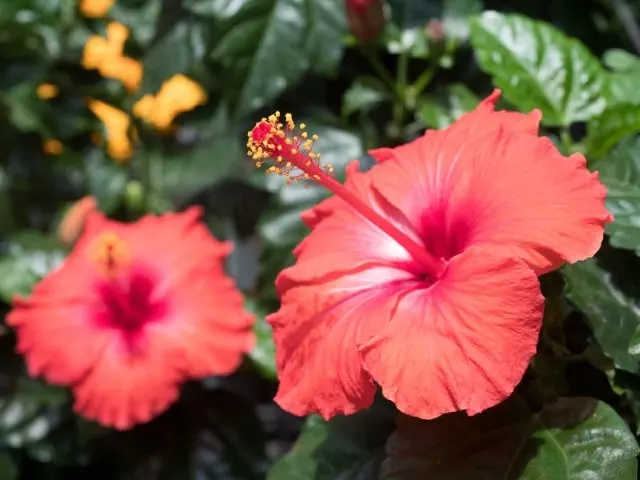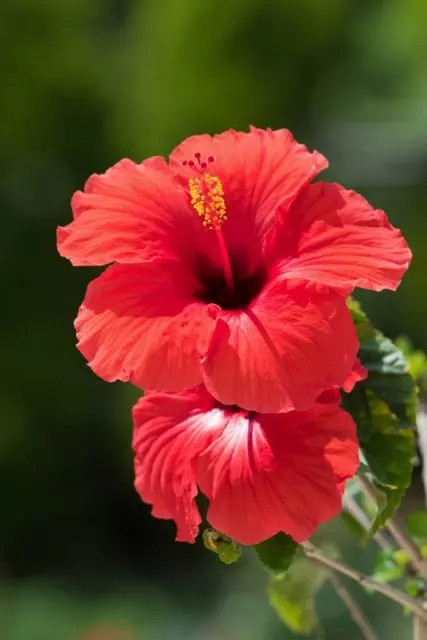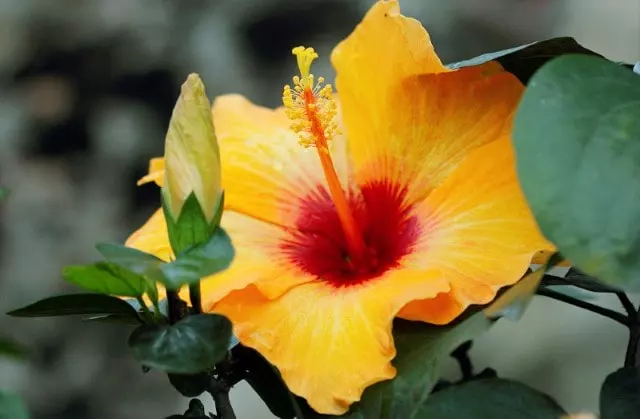Hibiscus is a tropical plant that grows perfectly in Florida. They can be planted in the ground or containers, and they prefer full sun and well-drained soil. There are many varieties of hibiscus, with flowers that can be red, pink, orange, yellow, and many other colors. In this article, I summarize hibiscus care in Florida correctly so that your plant is always in perfect condition.
Normally the flowering period of hibiscus in Florida is from spring to late fall. With proper care, you can enjoy beautiful hibiscus flowers every year in Florida. Hibiscus is a plant that suffers from cold and frost, which is why zone 10 USDA is one of the best zones for hibiscus to develop properly. Continue reading to learn all about hibiscus care in Florida.
Table of Contents
Types of Hibiscus Plant Varieties
There are over 200 varieties of hibiscus, all of which can be grown in Florida. The tropical climate of much of Florida is very good for growing hibiscus. Approximately 35 types of hibiscus, also known as rosemallows, are native to the United States.
Hibiscus can be divided into two categories, tropical and hardy. Typically, hibiscus sold in stores such as Lowes is of the tropical variety. Hardy hibiscus tolerates the cold of North Florida much better than tropical varieties of hibiscus.
Here are some varieties of tropical hibiscus and hardy hibiscus. You should select the one that is best suited to the region of Florida where you live. In North Florida, it is recommended to grow hardy hibiscus to better survive the winter.
Tropical Hibiscus
Tropical hibiscus is not as cold-tolerant as hardy hibiscus. It is not recommended to grow tropical hibiscus in North Florida because it may not survive the winter. These are some varieties of tropical hibiscus:
- Tylene
- Red Hot
- Charles Schmidt
- Burnished Gold
- Amber Suzanne
- Sun Shower
- Creole Lady
- Candy
- Black Beauty
Hardy Hibiscus
The hardy hibiscus grows very well in North Florida, it can withstand North Florida winters without problems. These are some of the hardy hibiscus varieties grown in Florida:
- Turn of the Century
- Swamp Rosemallow
- Kopper King
- Disco Belle Red
- Chablis
- Blue River II
- Scarlet Rosemallow
- Super Rose
- Fantasia
- Cherry Brandy
- Bordeaux
- Tender annual. In frost-free zones, Hibiscus can survive as a perennial. In all other areas, treat it as an annual
- Plant arrives approximately 36-inches tall, measured from the bottom of the pot to the top of the plant. Potted in a 10-inch diameter grower pot
- Grow Hibiscus in full sun outdoors for the best growth and enjoy
How to Care for Hibiscus in Florida
Hibiscus care in Florida is not difficult at all because Florida offers everything the hibiscus needs to grow and develop properly. You just have to consider what variety of hibiscus you will grow in your garden because the winter in northern Florida is different from the winter in the south. Continue reading to learn how to care for hibiscus in Florida.

Soil for Hibiscus in Florida
Hibiscus are moderately tolerant of salty soils. The hibiscus soil must be moist, well-drained, and rich in nutrients. The best soil pH for hibiscus growth and development in Florida is a pH between 6 and 7. I recommend reading our article about how to measure soil pH.
It is advisable to apply a layer of mulch to help retain moisture in the hibiscus. As mentioned earlier hibiscus likes moist but not waterlogged soils. Waterlogged soil could cause root rot or favor the appearance of pests and diseases in the hibiscus.
Watering Hibiscus
Hibiscus plants should be watered thoroughly after planting and frequently until established. Once established, they should be watered once a week, considering rainfall and temperature. Take special care during the hibiscus’ first year due to the summer heat in Florida, especially in the south.
In times of drought, the hibiscus should be watered abundantly twice a week. It is important to keep in mind that the plants should be in well-drained soil. These are the watering tips for hibiscus care in Florida.

Fertilizing Hibiscus in Florida
To maintain a healthy hibiscus plant with spectacular flowers, it is necessary to fertilize the hibiscus. It is recommended to fertilize four times a year hibiscus in Florida. A good fertilizer for hibiscus could be a 10-4-12 or 12-6-8. I recommend you to read our article the best fertilizer for hibiscus in Florida.
The first application should be in early spring, the second after the first growth flush, the third in the middle of summer, and the fourth in the fall. The amount of fertilizer used per application will depend on the size of the hibiscus plant.
Diseases and Pests Hibiscus Care in Florida
The University of California mentions in an article that several insects can affect hibiscus. These are some of the insects that can affect hibiscus:
- Mealybugs
- Spider Mites
- Thrips
- Whiteflies
- Aphids
- Soft Scales
The best way to avoid these insects on hibiscus is prevention. For example, pruning the hibiscus will help the plant to have good air circulation and not have damaged branches that could favor the appearance of insects.
Regularly observe your hibiscus tree for pests and diseases. To get rid of most insects you can use neem oil which is safe and environmentally friendly. You can learn more about neem oil in our article on how to mix neem oil for plants.
Occasionally, some viruses and bacteria can affect the hibiscus. The vast majority of diseases affecting hibiscus can be cured with proper treatment. Here are some of the diseases that affect hibiscus in Florida:
- Leaf Spots
- Armillaria Root Rot
- Botrytis blight (gray mold)
- Bacteria leaf spots
Proper hibiscus care in Florida will prevent you from having to deal with these hibiscus diseases. Avoid overwatering and make sure the soil has good drainage. If you notice damaged or diseased branches always remove them.
On the other hand, if the hibiscus already has a disease such as botrytis blight, you should use a fungicide such as triforine, thiophanate methyl, or chlorothalonil. Always read the manufacturer’s directions for the proper application of the fungicide.
- SYSTEMIC FORMULA: The systemic formula cures and prevents listed diseases for roses, flowers, shrubs, or even houseplants
- DISEASE CONTROL: Fungicide controls Black Spot, Powdery Mildew, Crabapple Scab, Boxwood Blight, and more
- RAINPROOF PROTECTION: Systemic rainproof protection lasts up to 2 weeks

Pruning Hibiscus in Florida
The ideal time to prune a hibiscus plant in Florida is in early spring, just before new growth begins. The least suitable time to prune a hibiscus is in late fall.
If the hibiscus plant has grown too large, and you want to make significant pruning, it is recommended to stagger the cuts over a few weeks. This will help to maintain the flowering cycle and provide more consistent blooms.
For a correct pruning of hibiscus, I recommend you to read our article on how and when to prune hibiscus in Florida. By following these steps, you will be able to prune your hibiscus correctly without damaging the plant.
Final Conclusions
In conclusion, hibiscus plants are well-suited for the warm and humid climate of Florida. Proper care for these plants includes providing them with full sun, well-drained soil, regular watering, and monthly fertilization during the growing season.
I hope this article on hibiscus care in Florida will be of great help and that you can always keep your hibiscus in perfect condition. I recommend our article about yellow leaves on hibiscus.


